If you’re a fan of flashy foliage, I’ve got just the plant for you. It doesn’t get much more extravagant than the leaves on Maranta leuconeura, the popular tropical houseplant better known as the prayer plant! Although it’s not considered the easiest species to grow, its looks definitely make it worth diving into its care requirements so you can learn how to keep one alive.
Keep reading for everything you need to know about Maranta care and how to grow a prayer plant indoors!
| Common name(s) | Prayer plant, Maranta, herringbone plant, rabbit’s foot |
| Scientific name | Maranta leuconeura |
| Family | Marantaceae |
| Height and spread | Up to 12 inches tall and 24 inches wide |
| Light | Bright indirect light |
| Soil type | Rich but airy, slightly acidic |
| Water | Keep lightly moist |
Disclosure: If you shop from my article or make a purchase through one of my links, I may receive commissions on some of the products I recommend.
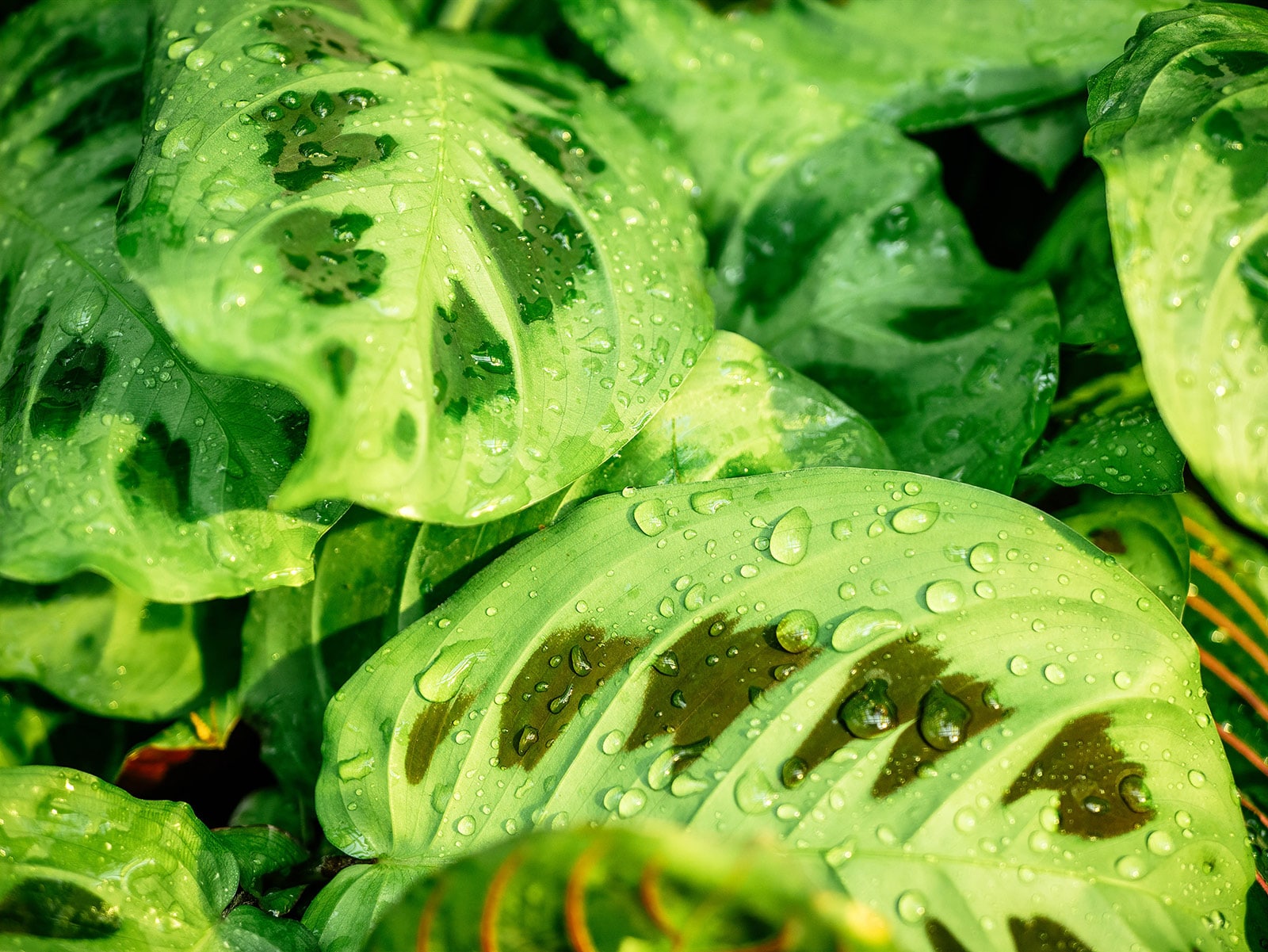
About Maranta
Natural habitat
Like so many of our other houseplant favorites (Tradescantia zebrina and Begonia maculata, for example), Maranta leuconeura is naturally found in humid, tropical forests in Brazil (specifically Pernambuco and Mato Grosso do Sul). Here, it forms part of the jungle undergrowth.
Description
It’s not difficult to see how Maranta became so popular as a houseplant! This clumping perennial doesn’t grow very tall (up to around 12 inches), but it can branch out horizontally quite extensively. It sports large, oval leaves on thin stems. The actual leaf patterns vary according to the variety you’re dealing with (more on that below), but one thing is for sure: They are all spectacular. The leaf undersides can vary from green to dark red.
This prayer plant does flower, although its tiny white blooms aren’t much to look at compared to its foliage.
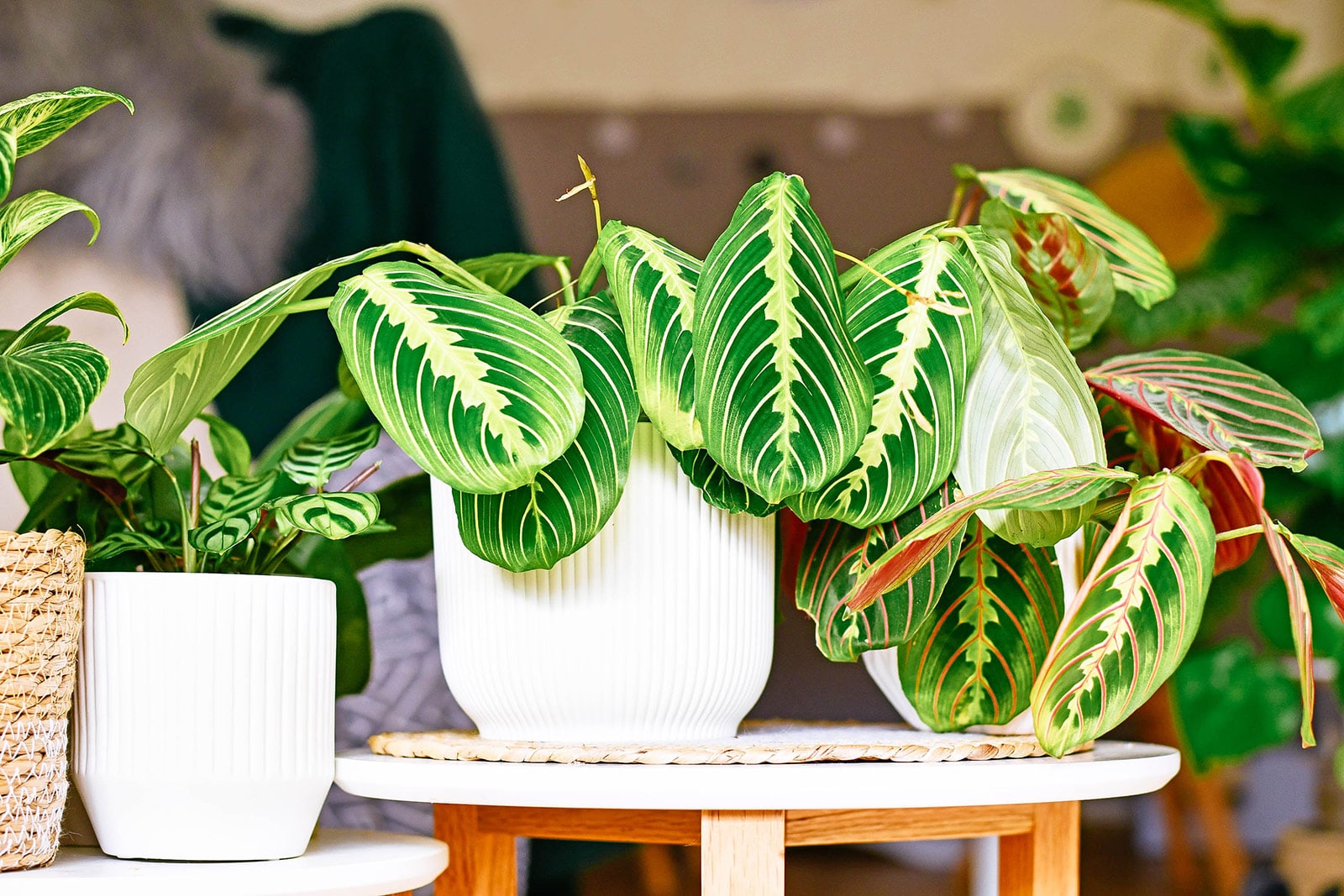
Maranta varieties
The genus Maranta actually contains around 50 species, but only 2 of them are regularly found in horticulture. One is Maranta leuconeura, the highly popular prayer plant we’re discussing here. The other one is its cousin Maranta arundinacea, which is actually very nice to look at as well, but mostly grown as a food item. It has a starchy, edible root that has been used in South America for thousands of years.
As for Maranta leuconeura itself, there are a bunch of different varieties out there. Some are naturally occurring, while others are selectively bred cultivars created by nurseries. A few of the ones you’re most likely to encounter in your local plant store are:
- Maranta leuconeura var. erythroneura: Also known as the red prayer plant or red nerve plant, this cultivar goes by a few other names: Maranta ‘Tricolor,’ Maranta ‘Fascinator Tricolor,’ or Maranta leuconeura var. erythrophylla. It has dark leaves with a splash of light green in the middle and reddish-pink leaf veins, making for a pretty dramatic effect.
- Maranta leuconeura var. kerchoveana: Lighter green leaves with dark markings, which lack the herringbone pattern. There is also a beautifully variegated Maranta version!
- Maranta leuconeura ‘Lemon-Lime’: Similar to var. erythroneura, but with light green rather than red leaf veins.
- Maranta leuconeura massangeana: Like a black and white version, sporting darker markings. It lacks red coloration.
- Maranta leuconeura ‘Silver Band’: More silvery-grey rather than green, with light midribs.
Where to buy Maranta plants:
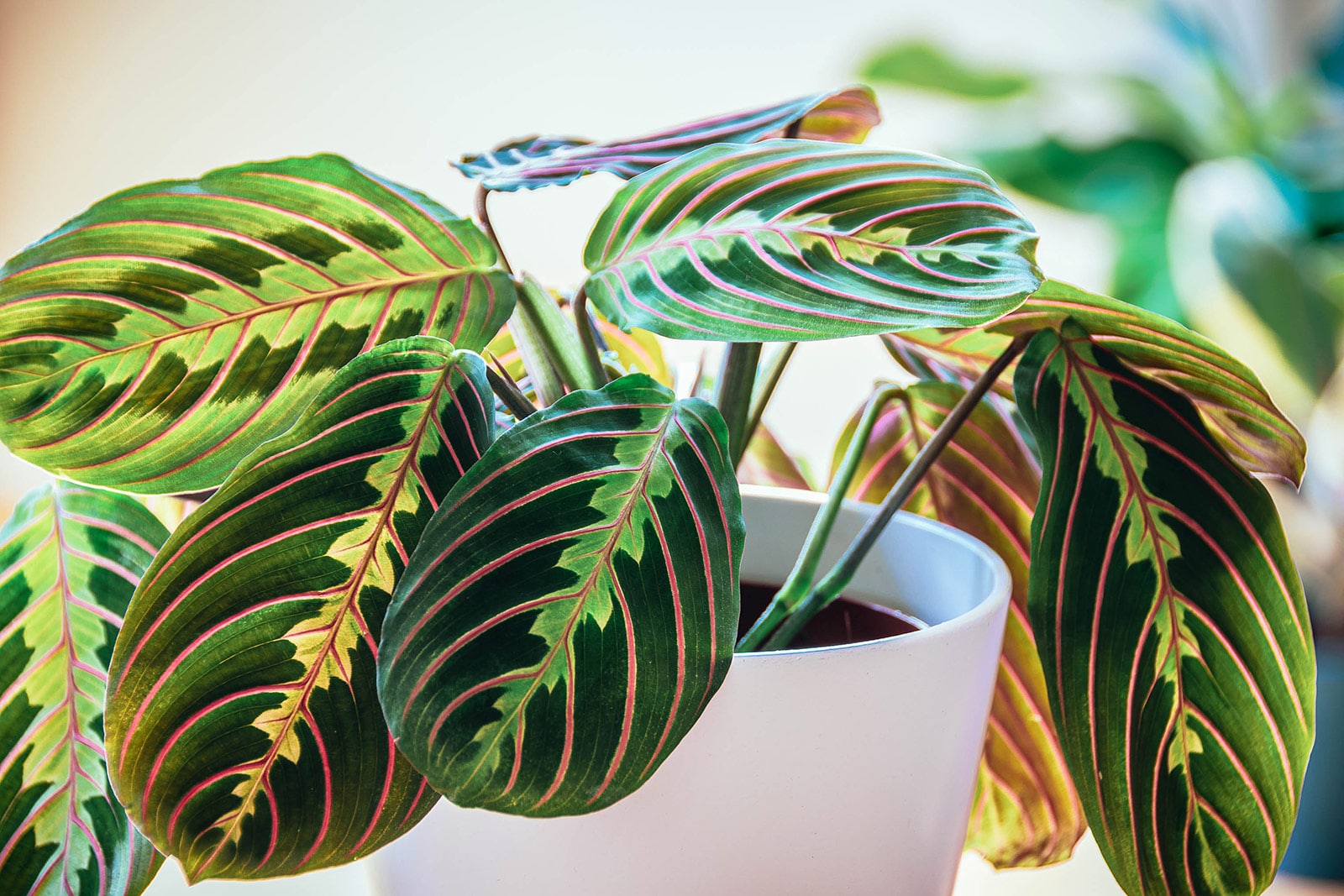
Will the real prayer plant please stand up?!
Does the name “prayer plant” sound familiar to you? That’s not surprising. Although houseplant enthusiasts tend to more or less agree that Maranta is “the” prayer plant, this common name is also used for a whole bunch of other popular houseplant species in the family Marantaceae.
The most popular “other” prayer plants are in the colorful and varied genus Calathea, although a good few species (including houseplant favorites Calathea orbifolia, Calathea ornata, and Calathea makoyana) were moved from Calathea to Goeppertia recently after a scientific review, so that one’s included now as well. You may also see the name used for Stromanthe and Ctenanthe.
The reason? All of these species pray! As with Maranta, their leaves fold upwards at night, reminiscent of hands in prayer. This movement is called nyctinasty and it’s not very well understood yet.
(Prayer plants aren’t the only ones that do this, by the way. Oxalis triangularis, also known as false shamrock, is another nyctinastic plant that folds its leaves at night.)
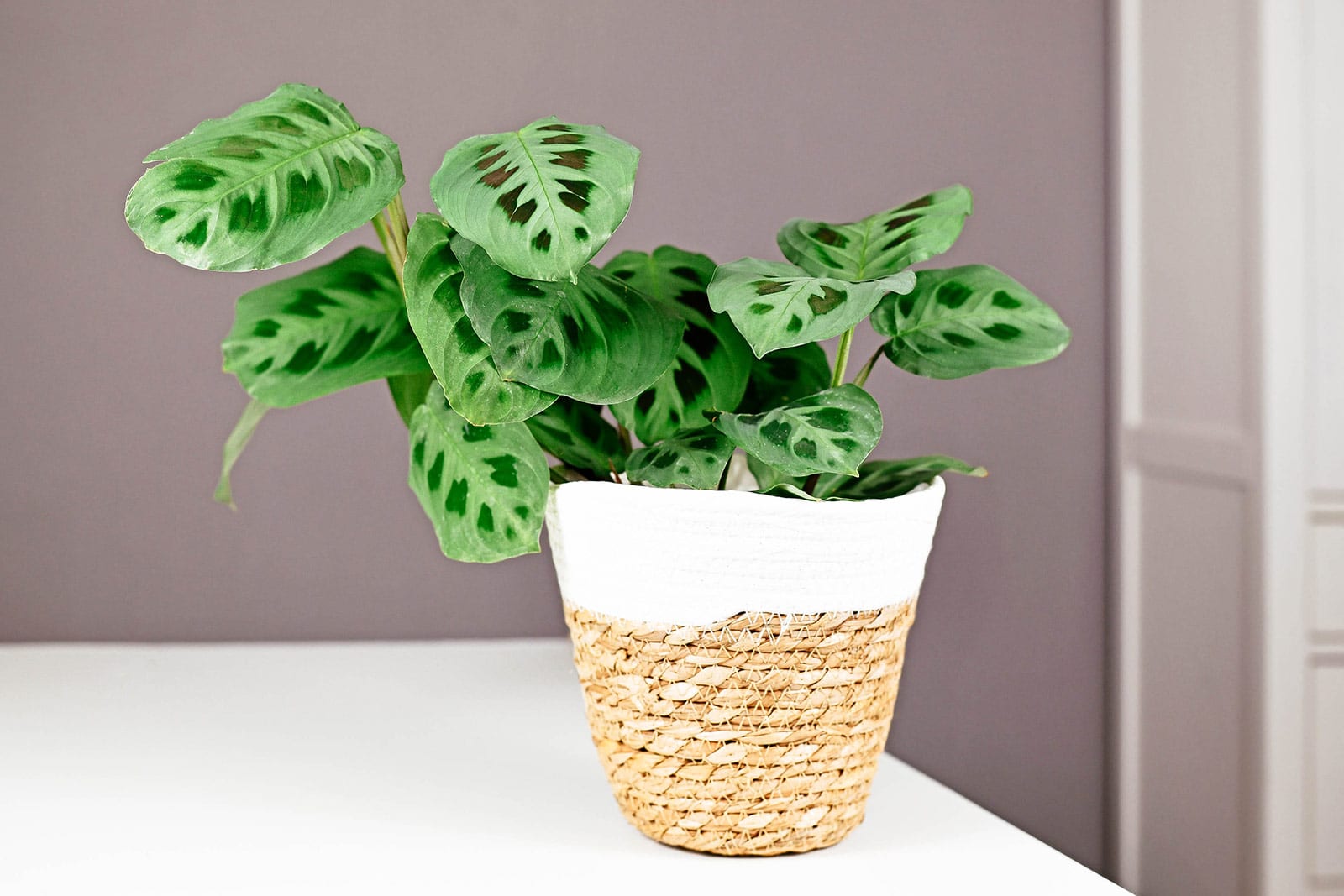
Caring for Maranta
Light and temperature
Like most of those popular Central-South American tropicals, Maranta prefers bright but indirect light. Being a part of the forest undergrowth, the species hasn’t evolved to be able to deal with strong direct sun.
I’ll concede that a few morning or evening rays won’t do any harm, but being blasted in the afternoon is a recipe for your Maranta’s beautiful foliage getting burned. This especially applies if the plant hasn’t been properly acclimated to higher-light conditions.
This species is not used to lower temperatures and will likely stop growing or even begin shedding leaves if you let things drop below 60°F. Keeping it at room temperature is a much better idea, although higher temps aren’t much of a problem either.
If you’re feeling comfortable in your home, it’s likely your prayer plant is as well. Just keep it away from A/C units, drafty hallways, and badly isolated windowsills.
Water and humidity
One aspect of Maranta care that many houseplant enthusiasts end up struggling with is watering. It can be a bit of a delicate balance and the species can react pretty dramatically to being left to dry out even a little too much. Keeping it too moist, on the other hand, can cause root rot.
So how often and how much should you be watering your prayer plant? Unfortunately, I can’t tell you, as it depends entirely on the environment. I can give you some pointers, so don’t worry; you’ll get a feel for it soon enough.
Your Maranta will appreciate being kept lightly moist. “Lightly” means it feels slightly damp, but absolutely never soppy. It’s fine if the top inch or two of the soil dries a little, at which point you can give the plant a sip.
This can take just a day or two during hot and dry summer days, but much longer during the cold winter months. Plants kept in lower-light conditions also won’t need watering nearly as often as those right next to a window.
If you’re not sure whether it’s time yet, just stick a finger into the soil to gauge the moisture level. You can also lift the pot: if it’s heavy, it’s not time yet, as the soil is still holding water.
Did you know? If you struggle with watering your Maranta properly, consider growing this plant hydroponically. Prayer plants are great candidates for growing in water, no soil needed.
The other main issue with Maranta is also related to moisture, but in this case, the levels in the air. Jungle habitats like the ones that prayer plants naturally grow in are often at 100 percent air humidity (!), meaning that this species isn’t really used to the much drier air in our homes. This can result in curled leaves, brown leaf tips, and even susceptibility to pests that prefer prayer plants’ fine leaves and dry air, like spider mites.
It can be very helpful to get a cheap humidity meter (like this digital hygrometer that I love and use) so you can keep an eye on things. If it consistently gives you readings under 50 percent, your houseplants (almost all of them, not just your Maranta!) will probably benefit from the use of a humidifier nearby.
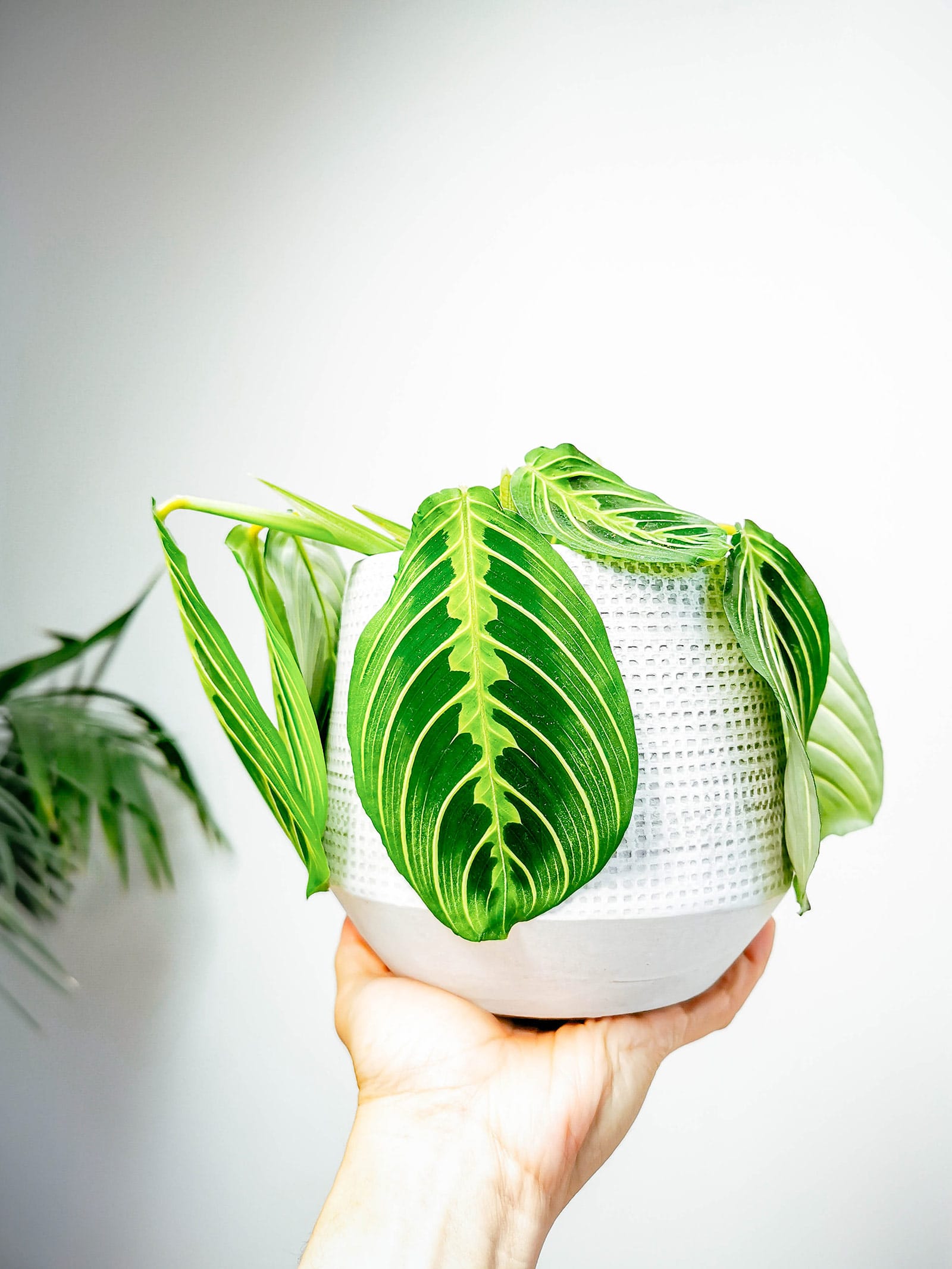
Soil and planting
The right soil type is important for your prayer plant’s health! Even if your watering habits are perfect, after all, it’s no use if the soil doesn’t drain (or, alternatively, dries much too quickly). Luckily the right mix for a Maranta doesn’t have to be anything complicated.
You can use a potting medium based on regular houseplant potting soil. Just add 10 to 15 percent peat moss or coconut fiber to ensure it retains some water and doesn’t dry out too rapidly. Also include 10 to 15 percent perlite, pumice, crushed lava rock or other gritty material to help the excess water drain easily.
Some indoor gardeners like to add loam to lower the pH, as Maranta supposedly likes acidic soil, but I’ve never done so and mine does just fine without.
As for the perfect planter, it’s probably a good idea to avoid terracotta unless you’re a chronic overwaterer. This material is porous and can dry the soil out too quickly for a moisture-loving species like this one. Any other material is fine as long as it has a drainage hole in the bottom. Some like a hanging planter, but I’m personally a fan of using a regular standing one.
Recommended products for Maranta plant care:
- FoxFarm Ocean Forest Potting Soil
- Burpee Organic Coconut Coir
- Perfect Plants Organic Perlite
- Nature’s Footprint Pumice Soil Amendment
- ThermoPro Digital Hygrometer
Fertilizing
Is your prayer plant putting out new leaves, enjoying life and growing well? In that case, it will definitely appreciate a little plant food during the spring and summer growing months. A regular balanced liquid houseplant fertilizer works fine if you dilute it a little more than the instructions indicate. You can also use other types of fertilizer, like emulsions, worm castings or even a thin layer of homemade compost.
Stop fertilizing during the winter months or if your plant isn’t growing well, or you may end up damaging the roots.
Recommended fertilizers for Maranta:
- Houseplant Resource Center Liquid Fertilizer for Houseplants
- Instant Biologics Instant Plant Food (Fizzing Nutrient Tablets)
- Maxsea All-Purpose Seaweed Plant Food
- Wiggle Worm Soil Builder Pure Worm Castings
Pruning
It’s not unusual for a Maranta to eventually lose its nice, bushy appearance. No worries! By pruning it now and then, you can easily keep it looking its best. Just select a stem you’d like to prune and make the cut wherever you want using clean, sharp scissors or garden shears.
It’s a good idea to include a stem node (bump), because as described in the section on propagation below, this will allow you to regrow the stem into a whole new plant.
You can also remove any crispy or unsightly leaves during pruning time; it’s completely normal for a plant to drop its old foliage. Nothing to worry about except if it’s happening at an alarming rate.
Dividing or repotting
Is your prayer plant getting somewhat out of control? Congrats! You must be doing something right. You can repot your plant, going up one pot size the coming spring.
If you don’t want to repot, you can also opt to divide your plant. Most Marantas consist of multiple stems in the same planter. This means you can take yours out of its pot and carefully shake things loose to divide it, potting the different stems up separately. Voilà, you now have more prayer plants, and you didn’t even have to wait for them to root!
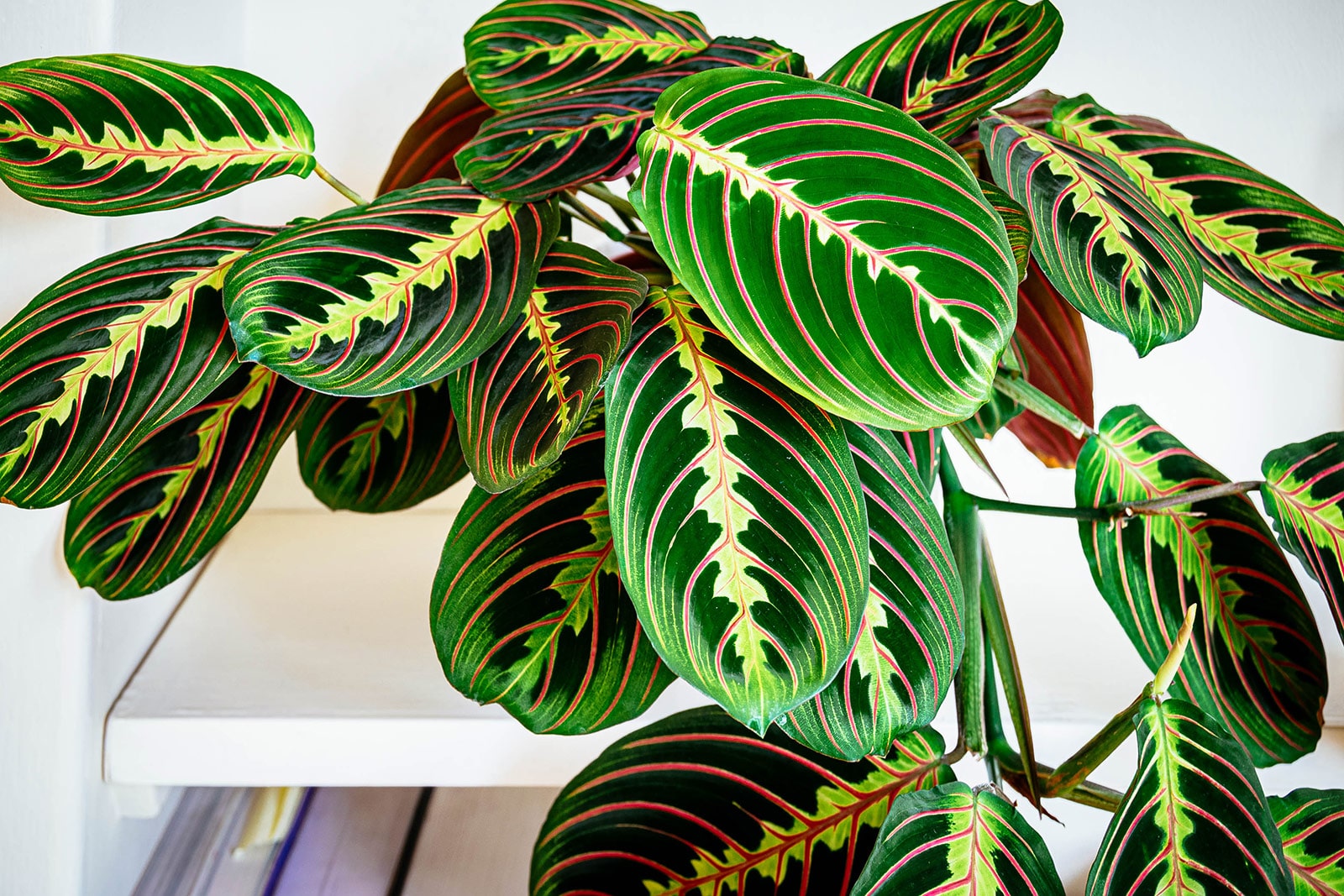
Propagating Maranta
As mentioned in the section on pruning above, you can regrow a Maranta from a stem cutting, as long as it has at least one node. This sets it apart from the Calathea section of prayer plants, which don’t have stems and can only be multiplied through division.
Here’s how you do it:
- Cut a healthy Maranta stem, including a node and a leaf or two so it can photosynthesize. It’s preferable for the node to be near the bottom of the cutting for easy rooting.
- Prepare a planter with normal prayer plant soil or find a nice vase if you prefer rooting your cuttings in water first.
- If propagating Maranta in soil: Dip the cutting in some rooting powder (bonus step) and push it into the soil so the node is covered. Place the whole thing in a mini greenhouse (bonus step) in a warm and light spot and keep the soil lightly moist. You can simulate a greenhouse effect by creating a “cage” around the cutting (using a few small stakes or chopsticks poked into the soil) and wrapping the cage with plastic cling wrap. Or if you have a humidity dome or garden cloche (typically used for seed starting or protecting seedlings), you can place your pot under that too.
- If propagating Maranta in water: Place the cutting in the vase, making sure the node is underwater, and find a warm and light place for it. Once the roots have grown an inch or two (which can take a few weeks to months), you can move the cutting to soil.

Common questions about Maranta care
How many types of Maranta are there?
There are 40 to 50 species of prayer plants, but 2 varieties of Maranta make up the bulk of nursery stock used as houseplants: Maranta leuconeura var. erythroneura and Maranta leuconeura var. kerchoviana.
Why does my prayer plant have brown tips?
Brown, crispy tips on a prayer plant are usually the result of improper watering, low humidity, too much sun, or excess fertilizer. Most of these are environmental conditions that can easily be corrected by using a moisture meter to gauge how dry the soil is, running a humidifier near your plant or moving it to a more humid room like a bathroom, or placing the plant farther away from bright windows.
If you suspect you fertilized too much, the best way to fix this problem is to repot your plant in fresh potting soil.
Are Maranta and Calathea the same?
Maranta and Calathea plants belong to the same family, Marantaceae, and are both referred to as prayer plants, but they are from different genera and distinguishable by their distinct foliage shapes and colors.
Is a prayer plant toxic to cats and dogs?
Nope, which is why it’s such a big favorite among pet owners! All species that fall under the “prayer plant” denomination are non-toxic.
Source:
Yoshida-Arns, K. N., Mayo, S., & Alves, M. V. (2002). O gênero Maranta L.(Marantaceae) no estado de Pernambuco, Nordeste do Brasil. INSULA Revista de Botânica, 31, 39-39.


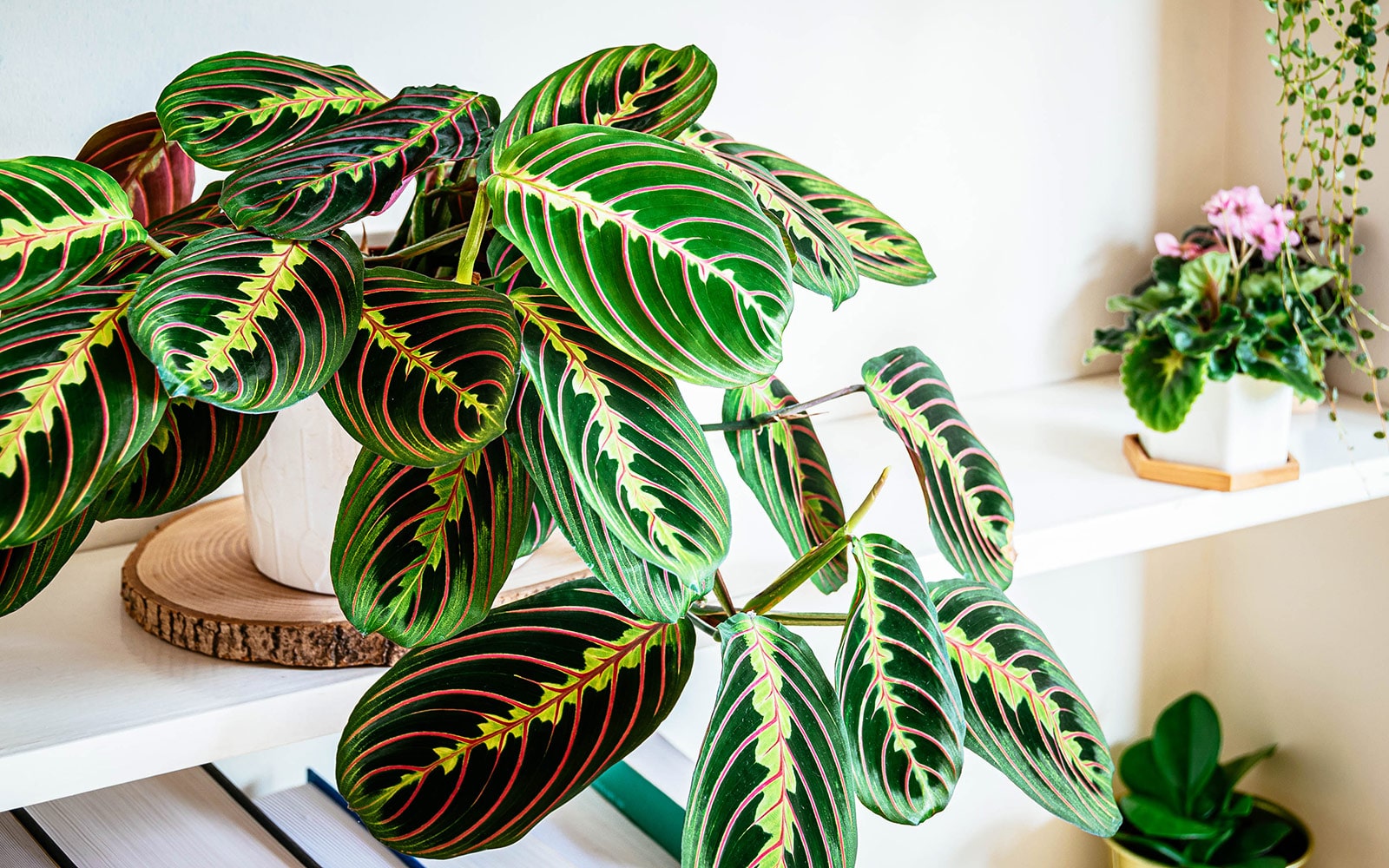













Agreed! Regards & Respect!
Thank you so much for such a lovely article with informative content. Hope to see more of a similar article.